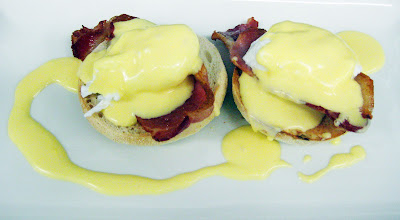The Talbot is well-known for it's links to Mary Stuart - the 'Queen of Scots'. But what is Mary's story and how did she end up descending our staircase to her execution? This post should shed a little more light on Scotland's most famous Queen.
The Beginning - Happy Years in France and a Young Queen
Mary Stuart was born at Linlithgow Palace in Scotland on 7th December 1542, the daughter of James V of Scotland and Mary of Guise. Six days after her birth her father died, and she became Queen of Scotland. From her infancy, Scotland's rival pro-English and pro-French factions plotted to gain control of Mary. Her French mother was chosen as regent, and she sent Mary to France in 1548. Mary lived as a part of the French royal family. In April 1558 she married the Dauphin Francis; she secretly agreed to bequeath Scotland to France if she should die without a son. In July 1559 Francis succeeded his father becoming King Francis II and Mary became Queen of France as well as of Scotland. Unfortunately, Mary's young husband Francis II died in December 1560 after a reign of 17 months. Mary, who was about to become 18 years of age, was left in a difficult position. Unwilling to stay in France and live under the domination of her mother-in-law Catherine De Medicis she decided to return to Scotland and take her chances with the Protestant reformers.

Scotland: The Early Years
On 19th August 1561, Mary landed at Leith in Scotland. For the next few years Mary tried to placate the Protestants and befriend Elizabeth while at the same time negotiating a Catholic marriage with Don Carlos, the son of Philip II of Spain. When refusals came on both the English succession and the Spanish marriage Mary accepted a marriage of love rather than a purely political match. She married her first cousin Henry Stewart, Lord Darnley on 29th July 1565.
Scotland: The Final Years
This marriage was unacceptable to the Protestants, and Moray, with the aid of other nobles, raised a rebellion which Mary quickly suppressed.. Her marriage with Darnley soured and she refused him the right to succeed if she died without issue. Alone and disappointed, Mary turned to her Italian secretary, David Rizzio, for comfort and advice. The Protestant lords disliked Rizzio's influence because they suspected him of being a papal agent, and Darnley openly stated that the Italian was too intimate with the Queen. On 9th March 1566 a group of Protestant lords, acting with the support of Darnley, murdered Rizzio in Mary's presence at Holyrood Palace. Mary, who was six months pregnant, survived the horrible ordeal.
In Edinburgh Castle on 19th June 1566, estranged from her husband and his allies, she gave birth to a son James (later James I of England). By the end of 1566 Mary had befriended James Hepburn, Earl of Bothwell, and was seeking a way to dissolve her marriage with Darnley. Various schemes were concocted; it seems unlikely, however, that Mary was aware of the actual plot to eliminate her husband. On 10th February 1567 Darnley was murdered at Kirk o' Field; the circumstances of his death to this day remain a mystery. At the time, Bothwell was believed to be the chief instigator. Nevertheless he was acquitted after an all too brief trial. In April, Mary went off with Bothwell (perhaps a victim of abduction); early in May he obtained a divorce from his wife, and on 15th May 1567 he and Mary were wed according to the Protestant rite. These events alienated even some of Mary's closest supporters. The nobles, many of whom disliked Bothwell, banded together to face Mary and her new husband at Carberry. The Queen was forced to surrender, and Bothwell fled. Mary was imprisoned at Lochleven Castle and on 24th July 1567, she was compelled to abdicate in favour of her son who became King James VI of Scotland. With the help of a few brave friends, Mary escaped from the castle and immediately rallied a large force behind her. They engaged in battle at Langside on 13th May 1568, and were soundly beaten by the army led by the Protestant lords. At this point Mary decided to leave Scotland and go to England to beg support from her cousin Elizabeth.

England: The Captive Years
Mary crossed the Solway into England and nearly 19 years of captivity; she never returned to Scotland. While she was incarcerated in England, numerous plots by English Roman Catholics and foreign agents evolved around her. These plots were frustrated by English agents, but serious alarm was raised concerning the safety of Elizabeth. The Babington plot, which called for the assassination of Elizabeth, was formed to trap Mary. Mary was found guilty of complicity and sentenced to be beheaded. Although reluctant to execute her cousin, Elizabeth gave the order that was carried out at Fotheringhay Castle on 8th February 1587. Mary was buried first at Peterborough; in 1612, after he had ascended the English throne, her son James had her interred in Westminster Abbey.

Shortly after, James ordered that Fotheringhay Castle be destroyed. Local towns and villages plundered the castle, and the Talbot (then known as The Tabret and a wooden tavern building since the 600s) took a significant amount of stone, windows and the staircase from Fotheringhay Castle. The staircase is said to be the very same one that Mary was pacing when she was told of her execution, and the stairs she walked down to meet her end.














.jpg)



































